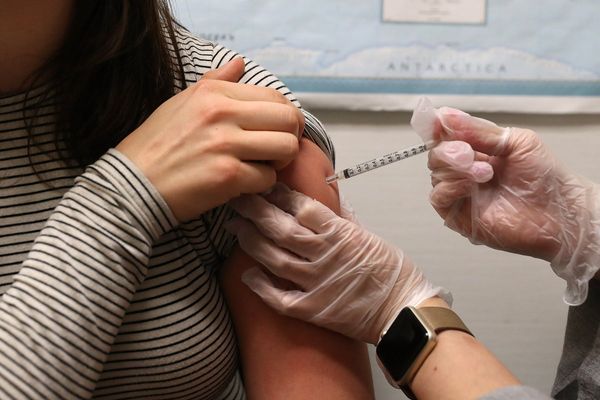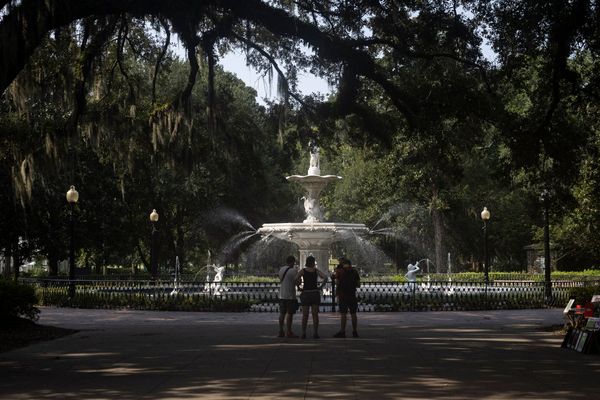
The European Commission has proposed providing Ukraine with €90bn (£80bn) in funding over two years, which it says will meet two-thirds of Kyiv’s financing needs for 2026 and 2027 and allow it to engage in peace talks “from a position of strength”.
There are two options for generating the money. It could be a “reparations loan” based on Russian assets frozen in the bloc – the option favoured by the commission but strongly resisted by Belgium, which hosts most of the assets.
Alternatively, in a concession to Belgium, the commission has also proposed common EU borrowing: raising the money on international capital markets, secured by the bloc’s long-term budget.
Here is how Russia’s frozen assets could be used to help fund all or part of the package, which still needs to be formally signed off by the European parliament and national leaders in the European Council.
What is the frozen assets plan?
Ukraine would get a loan secured on Russia’s central bank assets, which were immobilised by EU sanctions soon after the full-scale invasion of Ukraine in February 2022.
About two-thirds of the estimated €290bn of Russian assets in the west – mostly debt securities in the form of government bonds – are held at Euroclear, a central securities depository in Brussels.
The EU does not plan to confiscate Russia’s sovereign assets, which Russia has said would be an act of theft. Instead, it would sign a contract with Euroclear to provide a loan for Ukraine secured on these funds.
The idea is that when the war is over, Ukraine would repay the EU using theoretical compensation received from Russia for the invasion.
Once Russia pays reparations – a central but not guaranteed assumption of the plan – the EU would lift sanctions and Moscow could recover its frozen assets. Euroclear would have the funds to send to Russia, completing the circle.
The EU and many member states prefer this option since money raised on capital markets – Belgium’s preferred option – would have to be repaid and borrowing would require unanimity among EU countries, which is potentially a high hurdle to clear as Russia-friendly Hungary remains strongly opposed to further funding for Ukraine.
Will it happen?
Belgium has serious doubts: it fears being left alone with the bill if, for example, Russia demands its money because sanctions are lifted. Its foreign minister, Maxime Prévot, has reiterated that the proposals “do not address our concerns in a satisfactory manner”.
Most other EU countries have said they are ready to offer guarantees to share the risk, while officials consider the risk of Euroclear being successfully sued – another Belgian concern – to be marginal.
The commission says the plan complies with EU and international law and a “three-tier defence” shields Belgium from legal jeopardy. While it says it is “listening closely” to Belgium’s concerns and has taken most into account, it has also said the EU could proceed with the scheme if 15 out of 27 member states, representing at least 65% of the bloc’s population, vote in favour.
Pushing the proposal through without Belgium’s consent is technically possible but politically it would be a controversial move. EU leaders have said they will continue talking to Belgian authorities about how they can reassure them further, so it is an area to watch.
One crucial quandary is over ensuring Russian assets remain frozen. Currently, the EU’s Russia sanctions need to be renewed by unanimity every six months, raising the possibility of a premature and costly “defrosting”.
Hungary has routinely slowed down the approval of EU sanctions against Russia, although it has never dared to block them. To address this, the commission’s complex legal proposals included a ban on any release of the frozen assets via a veto on the sanctions.
The plan also hinges on Hungary and Slovakia, two Russia-friendly governments, approving the change to the legal basis of the sanctions.
EU leaders have already pledged to keep Kyiv afloat next year and officials say they are determined to reach an agreement on where the money should come from at a summit on 18 December.
What about Russia’s frozen assets outside Belgium?
Belgium holds two-thirds of Russian state assets worldwide and 86% of such funds in the EU. EU officials estimate €25bn is held in other EU countries but scattered in different banks with different contracts with Russia.
According to the European parliament, non-EU countries hold €80bn of Russian sovereign assets, notably Japan (€28bn), the UK (€27bn) and Canada (€15bn). Negotiations have been going on within the G7, and Canada and the UK are expected to play a part.
The European Commission president, Ursula von der Leyen, has said the Trump administration has been informed of the EU plan, but officials are pessimistic about any contribution from the US, which holds a modest €4bn.
What is the money for?
EU countries have ideas about how Kyiv should spend it. Germany, an influential backer of the frozen assets plan, has said the funds should be used to fund Ukraine’s defence alone, not for general spending to keep the country running.
France wants to ensure the money is used to buy European weapons rather than kit made elsewhere. But Sweden, the Netherlands and allies in central and eastern Europe think Ukraine is best placed to determine how to spend the money.
To split the difference, the commission has suggested the largest part should be earmarked for weapons made in Europe or Ukraine and a lesser amount would go to Ukraine’s budget. That would enable Kyiv to buy non-European weapons as well.
Will it be enough?
EU officials estimate Ukraine needs €136bn in 2026 and 2027 to continue its defence and keep the country running. The commission’s plan could generate €45bn a year for those two years.
But that does not fill the gap left by the withdrawal of US support. The US stopped new military aid to Ukraine after Donald Trump returned to the White House in January 2025. Shipments approved under the Biden administration mostly continued, although the supply of US Patriot systems was stopped in July over concerns about low US stockpiles.
The US is supplying Ukraine with weapons paid for by European governments. Researchers at the Kiel Institute have concluded that to replace the US, Europe as a whole would need to spend €82bn a year, about 0.21% of GDP.
Then there is the colossal bill for rebuilding Ukraine if and when the war ends, estimated by the World Bank to be $524bn (€450bn), a calculation published in February, before the latest months of intense destruction.







